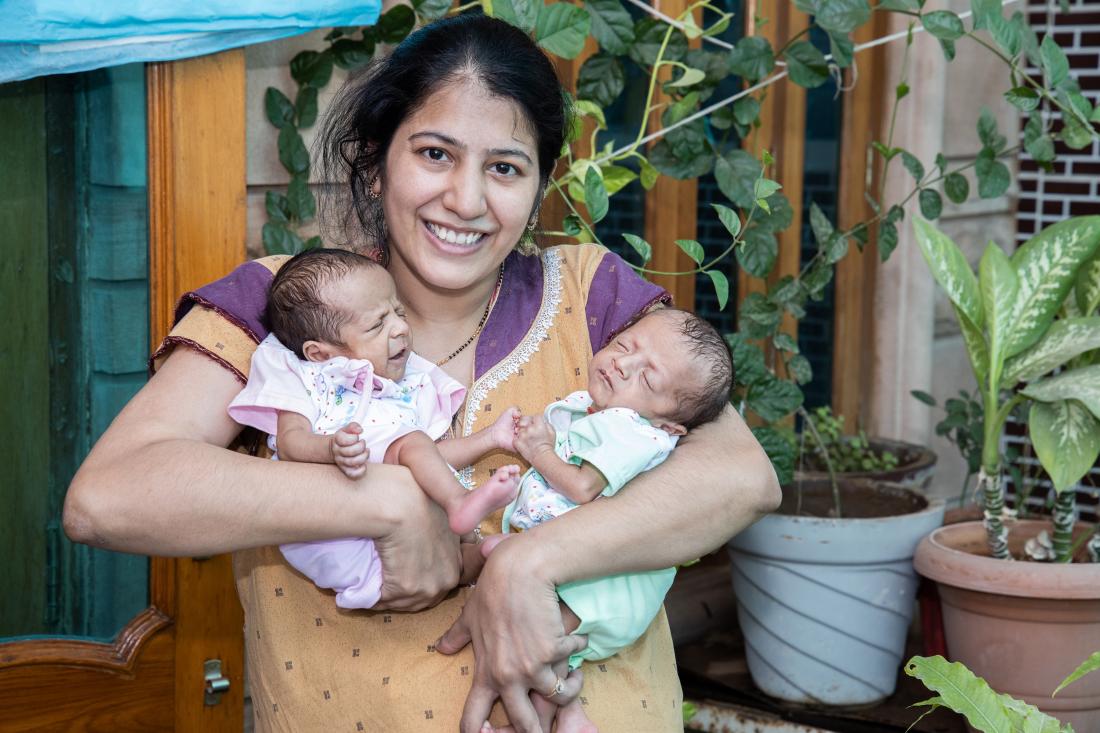The Impact of Unconditional Cash Transfers to Pregnant Women and Lactating Mothers on Child Health in India
- Children under five
- Mothers and pregnant women
- Rural population
- Children under one
- Food security
- Health outcomes
- Nutrition
- Stunting
- Cash transfers
- Information
- Unconditional cash transfers
The prevalence of underweight children in India is among the highest in the world, with undernutrition disproportionally affecting low-income children. The government of India is considering increased use of cash transfer programs in order to improve early childhood nutrition. In partnership with the Government of Jharkhand, researchers conducted a randomized evaluation to study the impact of unconditional, framed cash transfers to pregnant women and lactating mothers on child health.
Policy issue
The prevalence of underweight children in India is among the highest in the world, with undernutrition disproportionally affecting low-income children. Among the lowest wealth quintile, 51 percent of Indian children under five years old are stunted, compared to 22 percent for the highest quintile.
In order to improve early childhood nutrition, the government of India is considering increased use of cash transfer programs. While conditional cash transfer programs in many countries have shown success, it is difficult, expensive, and time-consuming to verify that conditions for the transfers are met, delaying transfer receipt and increasing the likelihood that no transfers are made. One option to avoid these issues is to provide cash transfers without any conditions attached. While some research has found encouraging results from unconditional cash transfers, there is little evidence from South Asia and it mostly has come from transfers that were not implemented by governments. Other research has found that “labeled” cash transfers, or unconditional cash transfers that are framed for a particular purpose, may be enough to shift behavior. It is also unclear when the optimal time to provide cash transfers is for improving child development outcomes.
To better understand the impact of unconditional cash transfers on child health outcomes in India, researchers partnered with the Government of Jharkhand to evaluate the impact of unconditional, framed cash transfers to pregnant women and lactating mothers.
Context of the evaluation
Jharkhand is one of the most economically vulnerable states in India, with high rates of child stunting and malnutrition. Forty-three percent of children under five years old are stunted, 15 percent are wasted, and 42 percent are underweight. Of women aged 15 to 49 years, close to 70 percent are anemic and over 40 percent are classified as “thin” on the Body Mass Index scale. Approximately 37 percent of the population of Jharkhand lives below the state-specific poverty line and 76 percent of the state is rural.
Integrated Child Development Services (ICDS), a central government program to improve early childhood health and nutrition through initiatives at community health centers known as Anganwadi Centers (AWCs), provides food to more than 750,000 pregnant women and lactating mothers and approximately 5.2 million children under six years of age in Jharkhand. However, these researchers found that 39 percent of surveyed women registered for take-home rations at their AWC often did not receive their allotment. To ensure that resources actually reach the women, the government was interested in exploring other forms of support for improving childhood health outcomes, such as cash transfers.

Details of the intervention
Researchers partnered with the Government of Jharkhand to conduct a randomized evaluation on the impact of unconditional, framed cash transfers to pregnant women and lactating mothers on child health.
Local community health workers at 960 AWCs ran the intervention. Community health workers informed eligible pregnant women (i.e., those in their first and second trimesters) that they were eligible to register for a program under which they could receive a year of unconditional monthly cash transfers of INR 500 (US$7.66). To register, women supplied their bank account information, where community health workers helped create accounts for women without one.
Researchers randomly assigned 960 AWCs to one of four groups:
- Two Year Group: Women in 240 AWCs received monthly transfers for the two years after the child was born
- First Year Only Group: Women in 240 AWCs received monthly transfers for the first year of the child’s life
- Second Year Only Group: Women in 240 AWCs received monthly transfers for the second year of the child’s life
- Comparison Group: Women in 240 AWCs did not receive cash transfers
This design allowed researchers to assess the impact of unconditional cash transfers as well as to evaluate the optimal timing and duration of transfers in this context.
Transfers were made monthly to the mother’s registered bank account and framed as being for nutritional purposes. Transfer recipients who provided mobile phone numbers received monthly interactive voice response calls and SMS messages informing them that the month’s transfer was sent and should be used to purchase nutritious food for herself and her child. The content of the nutritional message varied by the stage of pregnancy or lactation. Researchers also called community health workers to inform them about the transfers and to ask them to spread the message in their villages.
Researchers conducted surveys six months, twelve months, and two years after the start of the transfers to collect information from women and their children on nutritional outcomes including child weight-for-age, child height-for-age, and consumption and dietary diversity of the child and mother, among others.
Results and policy lessons
Research ongoing; results forthcoming.